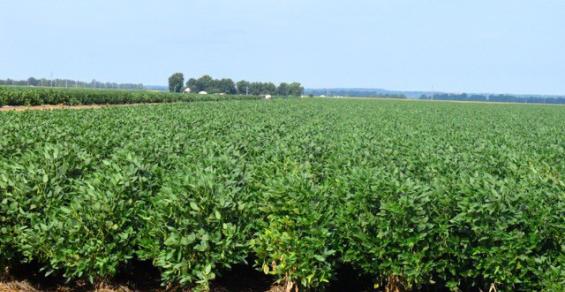Crop advisors encourage growers to do their homework before making their seed investments.
Seed selection can be a challenge. New technologies, climate, soil and overall environment play a part in finding the right cotton, corn or soybean variety for even one part of a farm over another one. And crop advisors encourage growers to do their homework before making their seed investments.
Heading into 2023 cotton production, yield potential trumps everything else for seed selection, said Brian Pieralisi, Mississippi State University cotton agronomist. Yield potential is often influenced by disease and nematode tolerance and other environmental factors.
“Basic field knowledge of the presence of pathogens or nematodes aids in making these decisions,” Pieralisi said, noting that newer varieties are available with certain disease tolerance that can enhance production. “Monitoring variety performance across multiple environments and agronomic practices will help in getting a broader knowledge of variety performance.”
Advanced Bt technologies should also be considered when selecting any crop variety. For cotton, new Bt and herbicide-tolerant varieties offer numerous opportunities. “Three-gene Bt cotton is not new, but it is providing control of bollworms and other lepidopteran pests,” Pieralisi said.
“The current trend is to plant less 2-gene Bt cotton in Mississippi and other Delta regions. To my knowledge, many of the popular 2 gene Bt cotton varieties are phasing out.”
Thrip control
Better thrips and plant bug control may be available when the much-anticipated ThryvOn technology receives regulatory approvals. ThryvOn cotton has provided exceptional thrips control on MSU and other university test plots. Pieralisi said the threat of insecticide resistance from thrips could make ThryvOn varieties appealing to many growers.
Growers planting cotton and other crops into a cover-crop system should make sure of good seed-to-soil contact. “I would select a 3-gene Bt variety to plant into cover crops, but more importantly pay attention to how the seed is planted,” Pieralisi stressed. “Good seed to soil contact can be critical to emergence and vigor early in the growing season. Achieving a consistent, vigorous stand can provide a great advantage in avoiding maturity delays.”
Brian Pieralisi (MISSISSIPPI STATE UNIVERSITY)
A steady crop rotation should naturally benefit cotton planted into fields with a history of insects or disease. “Corn is a great rotational crop for cotton if reniform nematodes are present in the field,” Pieralisi said. “Growers should also think about relative maturity of varieties and varietal growth habit.
Varietal growth habit is important to PGR management. “This could also be influenced by crop rotation,” Pieralisi said, adding “having a good understanding of varietal vegetative potential can aid in many of the management strategies during the growing season.”
Soil tests are essential to help determine which variety is needed and the type and amount of nutrients to apply. Pieralisi said more growers are making foliar fertilizer applications, especially of potassium fertilizer during peak bloom.
“There’s still a big question if we can get enough potassium into the plant through the leaves to replace a soil-applied program,” he said. “I think there will be a combination of soil-applied potash and supplemental potassium fertilizer applications in 2023.”
He encouraged producers to concentrate on “nitrogen use efficiency” to help tame high N costs. “Growers are splitting applications to avoid as much N loss as possible,” he said. “Some growers may opt to make a three-way split application which would include: at planting, pinhead square, and first bloom applications.”
Don’t limit variety selection to your state
State variety testing programs provide critical research. But what about similar environments across a state line? For example, the Mid-South Soybean Variety Trials database provides data on soybean varieties in Arkansas, Tennessee, Kentucky, North Carolina and Virginia, said Virginia Sykes, University of Tennessee assistant professor and Extension variety trials coordinator.
“A location in West Tennessee may share more similarities to sites in East Arkansas than it does to East Tennessee,” she said. “By combining variety testing data across multiple states, we can create a more robust set of data that allows us to better predict which varieties are best suited to specific regions and growing conditions.”
At the time of this article, the Mid-South soybean variety database was transitioning to a new website, which will be available at tiny.utk.edu/MidSouthSoybeanOVT.
Sykes said specific states or trial locations might be selected on the site.
Additionally, there are options to include soil texture, irrigated or non-irrigated, and full or double crop systems. “There are filter options available for variety characteristics, such as brand name, variety name, maturity group and herbicide tolerance,” she said.
Sykes also coordinates Tennessee soybean, corn and cover crop variety trial data, which is available at www.search.utcrops.com. The most recent seed variety trial data is also available at other Midsouth Extension sites. State and national soybean, corn and cotton associations can also help growers fine-tune their variety selection.
Late season variety field days and offseason educational sessions through Extension and seed companies can also point producers in the right variety direction. And data from variety trials grown by local farmer cooperators may answer many questions.
All of these recommendations can help producers put the right seed in the right environment for the best yield efficiency.




